Recent Articles
Popular Makes
Body Types
2018 Subaru BRZ vs. 2018 Nissan 370Z: Which Is Best?
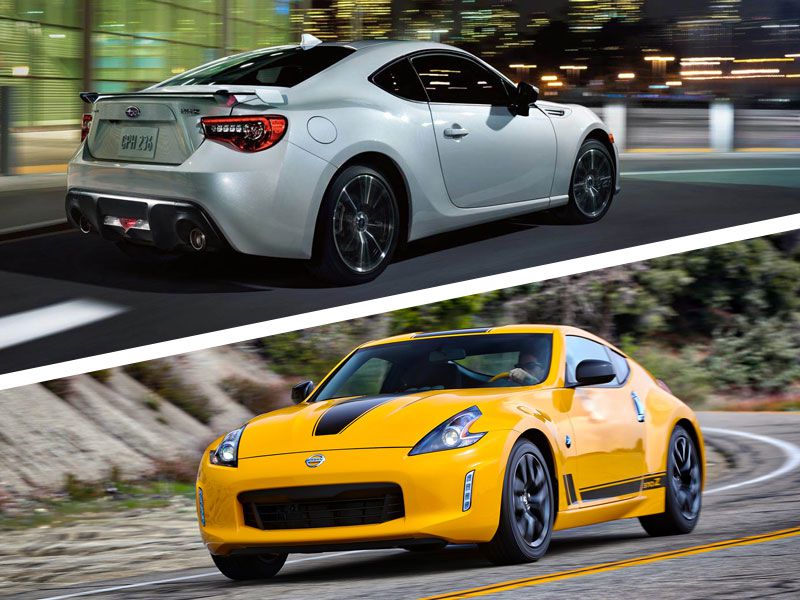
2018 Subaru BRZ vs 2018 Nissan 370Z
Choosing the best car between the 2018 Subaru BRZ and the 2018 Nissan 370Z is almost like choosing between soup or a salad. Just because they’re both sports cars doesn’t mean they’re interchangeable. They each have their own place in the overall automotive menu.
Firstly, though, congratulations on “getting it” — on understanding the joys that cars like these can bring. And we’re also grateful that Subaru and Nissan are making them, instead of throwing in the towel and just building crossovers. The thing to remember is that both cars have their positives and negatives. Those seeking a driver’s car, though, are invited to come along for this ride as we weigh up each attribute.
Pricing
The 2018 Subaru BRZ starts at $26,455 for the Premium trim. An automatic transmission means going up to Limited, paying $1,100 over the manual version of that trim, and writing a check for $30,405. The Premium still comes with LED headlights, satellite radio, and a leather-wrapped steering wheel, however. And the automatic has steering wheel-mounted paddle shifters.
The base 2018 Nissan 370Z starts at $30,875, going up to $39,075 for the top Touring trim. The middle trims are Sport ($34,635) and Sport Tech ($37,955). The automatic transmission adds $1,400. There are also convertible and Nismo versions, but they're not really BRZ competitors.
Subaru BRZ
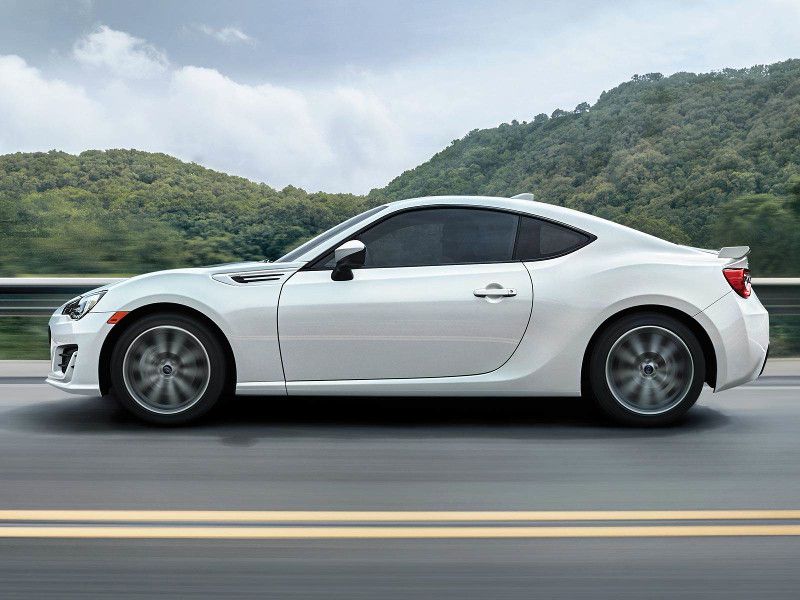
Photo by Subaru
Equipment
As we just mentioned, even the entry-level BRZ comes with a decent amount of standard equipment. Going up to the Limited trim brings a 7-inch touchscreen (almost an inch bigger than the Premium version’s), plus navigation and Apple CarPlay/Android Auto smartphone integration.
Of the 370’s four trim levels, things don’t really get interesting until we move past base. The Sport trim brings a limited-slip differential, 19-inch alloy wheels that are of better quality and an inch bigger in diameter than the entry-level model's, plus stronger brakes and a Bose stereo system upgrade. The Touring trim, meanwhile, makes life a little easier for longer trips by adding navigation and heated seats.
Subaru BRZ
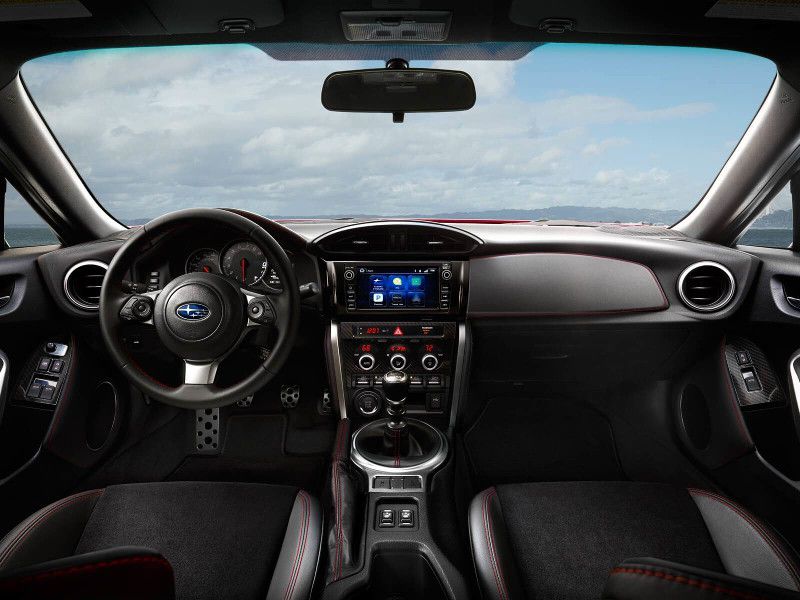
Photo by Subaru
Options
The BRZ’s Limited trim is eligible for a Performance Pack ($1,195). Available only with a manual transmission, it includes an upgraded suspension (from Sachs), brakes from Brembo (the supplier to many top performance marques), and alloy wheels that are half an inch wider than standard. This is a useful bundle and one of the most compelling reasons to stretch to the Limited trim in the first place. (Another valid recommendation would be to go for the most basic BRZ and revel in its comparative rawness.)
Getting extra equipment in the 370Z means buying a higher trim level. The 2018 model year did bring a Heritage Edition with various cosmetic additions and color choices.
Subaru BRZ
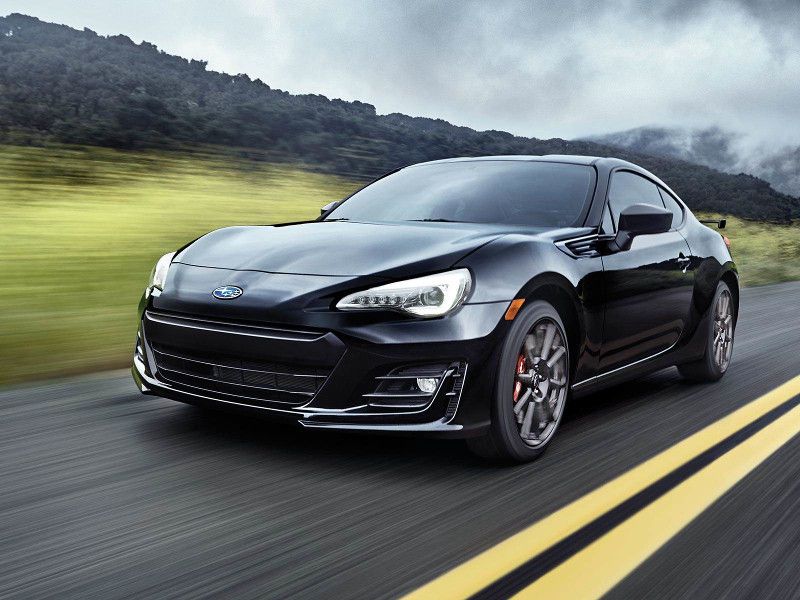
Photo by Subaru
Standout Features
Both the BRZ and the 370Z have driver appeal, an increasingly rare quality these days, especially at the affordable end of the spectrum. It follows, then, that their most interesting features would cater for the enthusiast audience. For example, the BRZ comes standard with a Torsen (torque-sensing) limited-slip rear differential that optimizes traction).
Starting at the 370's Sport trim, the manual transmission gets a rev-matching feature that automatically blips the throttle for smoother downshifts, simulating the time-honored heel-and-toe technique. Additionally, every 370Z has a carbon fiber driveshaft. This means that although it’s strong, it’s also light when compared with a conventional steel equivalent. Less rotating mass results in better engine responses.
Nissan 370Z
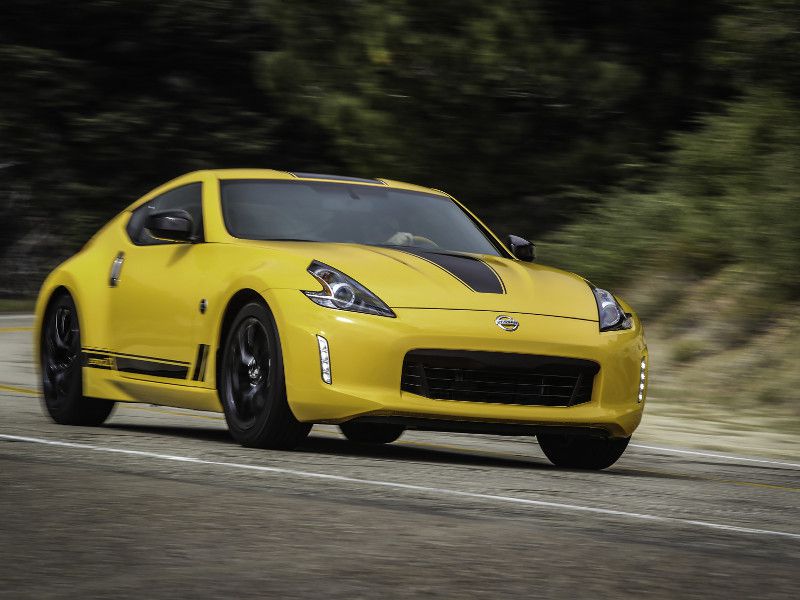
Photo by Nissan
Engines and Transmissions
The BRZ uses Subaru’s hallmark flat-four engine, featuring two pairs of horizontally opposed pistons instead of the more usual four upright cylinders in a line. It develops 205 horsepower and 156 lb-ft of torque from 2.0 liters of displacement. The six-speed manual transmission sends power to the rear wheels. A sox-speed automatic is optional, but that drops output to 200 hp and 151 lb-ft.
The rear-drive 370Z’s 3.7-liter V6 engine is also a company specialty, found in several Nissan/Infiniti vehicles. It produces 332 hp and 270 lb-ft of torque. A six-speed manual transmission is standard while a seven-speed automatic is also available.
Nissan 370Z
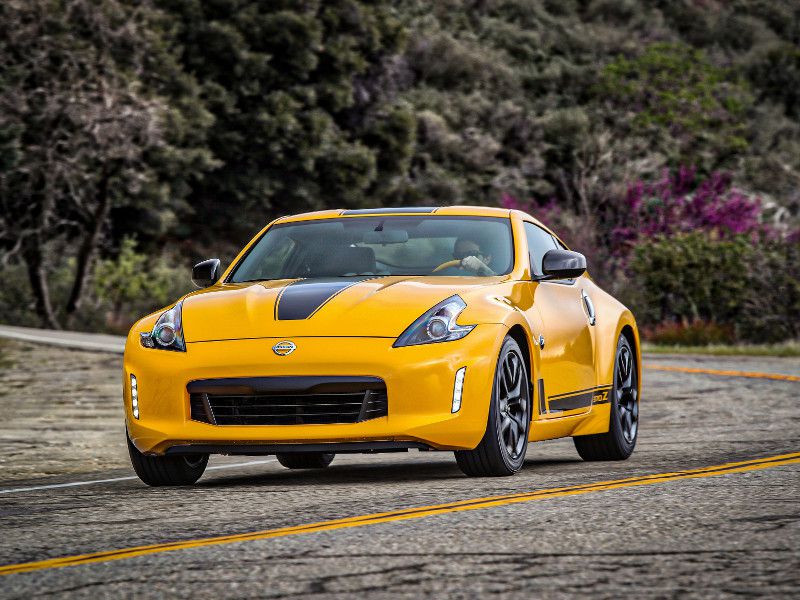
Photo by Nissan
Performance
With that smaller engine and lower power, it seems like the BRZ has brought a potato peeler to a gunfight. Sprinting from standstill to 60 mph takes 6.2 seconds (about a couple of seconds better than ho-hum) before hitting a top speed of 140 mph. That's nice, though hardly breathtaking.
The 370Z needs 5.1 seconds to reach 60 mph on its way to a top speed of 157 mph. But that’s not the whole story. Let’s look at bulk. The BRZ weighs 2,789 pounds with its manual transmission. Compare that with the 370Z’s 3,333 pounds in the base trim with the manual transmission. That weight difference is perceptible from the driver’s seat, and it helps the BRZ feel closer to the 370Z than the 0-60 number would suggest.
Nissan 370Z
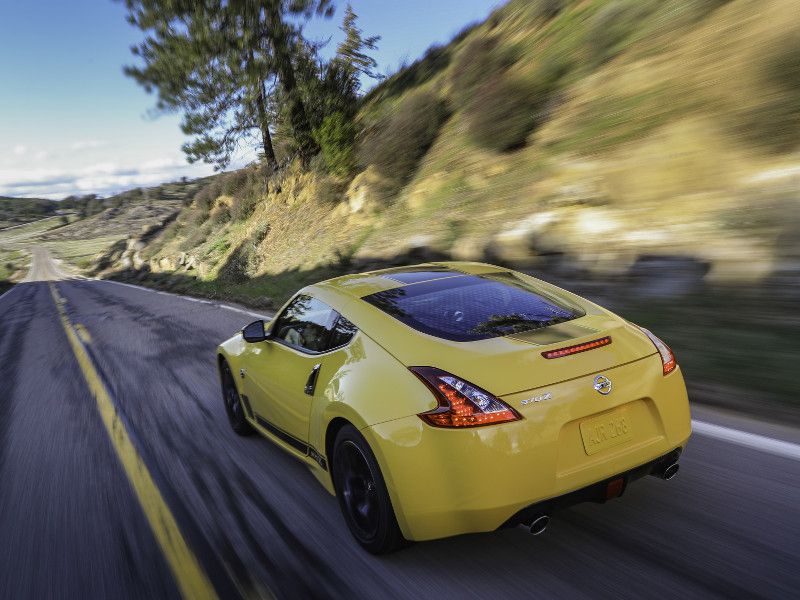
Photo by Nissan
Handling
As an introduction to rear-wheel drive while not having the power to get into serious trouble, the BRZ is ideal. As mentioned in the Performance section, the relatively light weight of the BRZ brings a nimbleness to the chassis. An excellent front-to-rear balance enhances things even further. The Limited version with the Performance pack would still compare well price-wise to a 370Z Sport.
It takes a little more skill to enjoy and exploit the 370Z, though Nissan does of course provide traction and stability control systems to mitigate any clumsy moves. (That goes for the Subaru, too.) Even so, the 370Z’s weight works against it, despite its good balance. And there’s not much feel to the chassis.
Subaru BRZ
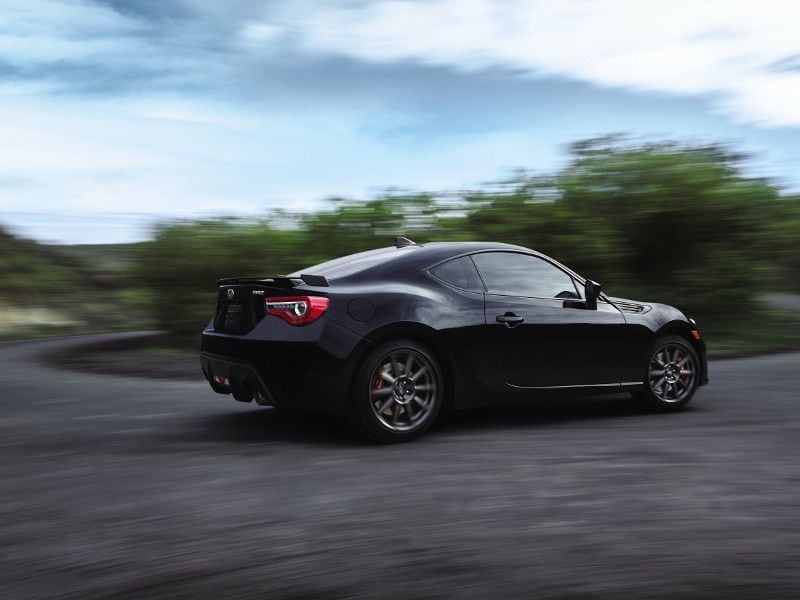
Photo by Subaru
Exterior Design
Subaru cars are not known for their gorgeous designs. The company almost seems to take an “anti-design” approach, instead emphasizing functionality. The BRZ is something else. Although this car was co-developed with Toyota (which might have supplied the extra visual flair), Subaru’s great contribution is that flat-four engine. This configuration allows for a shallow nose and gives the BRZ that low-slung stance.
Like the BRZ, the 370Z follows the classic coupe styling formula of a long nose and a low roof dropping sharply down to a tidy rear. For such a distinct appearance, the 370Z has worn the years well since its introduction nearly a decade ago. Styling is subjective, and you'll choose your favorite between these two.
Tie
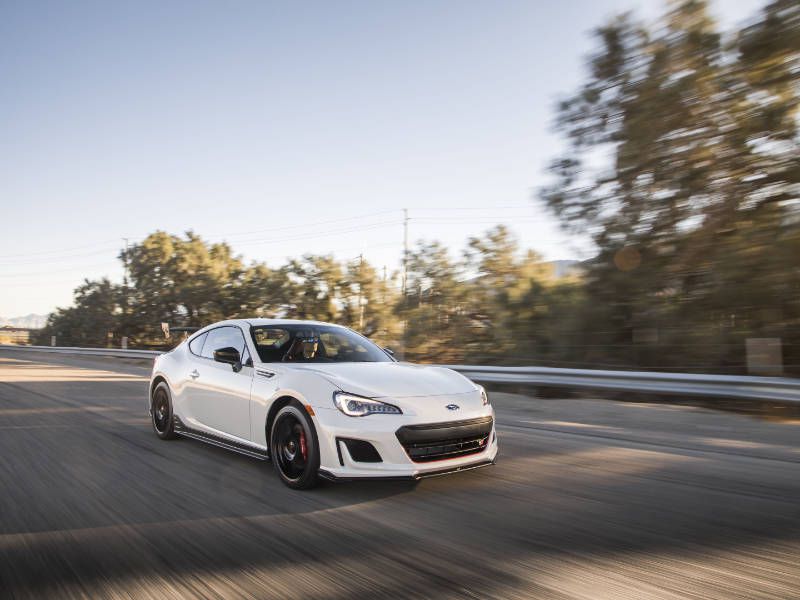
Photo by Subaru
Interior Design
The BRZ has rear seats, but since this is such a small coupe, they’re best for holding weekend bags rather than extra passengers. The 370Z is strictly a two-seater. The plastics in the BRZ’s cabin are just OK, rather than high-quality, but the shapes are pleasing and the ergonomics are fine.
The 370Z’s advancing years are apparent in the cabin, which is not much different from its predecessor, the 350Z, that debuted in 2002. One of the Nissan's quirks is the driver’s instrument cluster that moves up and down with the steering column (it only adjusts for height, not reach — and this is a $30,000-plus car). The three gauges above the center console are kind of cool, though.
Subaru BRZ
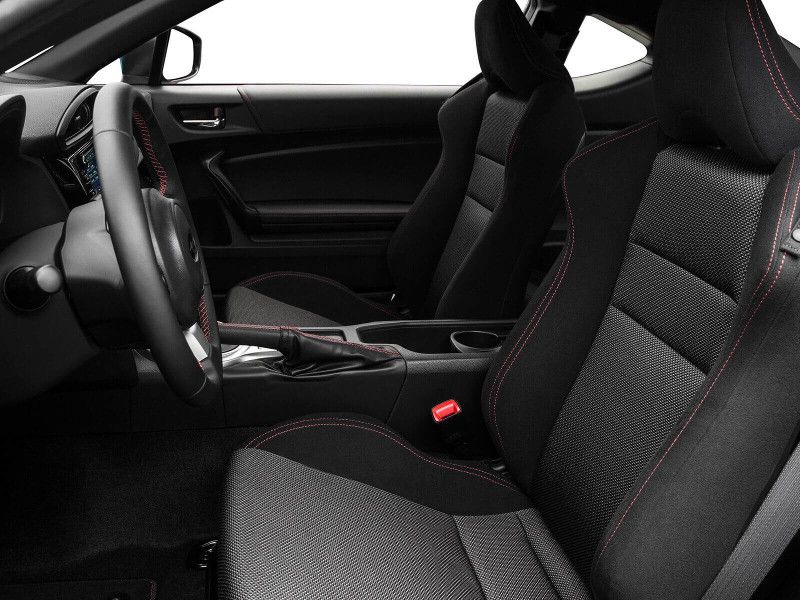
Photo by Subaru
Overall
Both of these coupes are likely to be coveted, collected and modified for years to come — like the other Z cars in Nissan/Datsun's history or the Mazda MX-5 Miata. The BRZ would make an excellent MX-5 alternative for buyers who prefer metal roofs rather than convertibles.
For anyone just starting out on the wonderful journey of being a driving enthusiast, wanting to see what all the fuss is about with manual gearshifts and rear-wheel drive, the BRZ is an excellent choice. To the more experienced among us (with bigger budgets), head for the Nissan dealership. But bear in mind that it’s usually more fun to drive an underpowered car at its limits than rarely getting to explore the full potential of a more powerful machine.
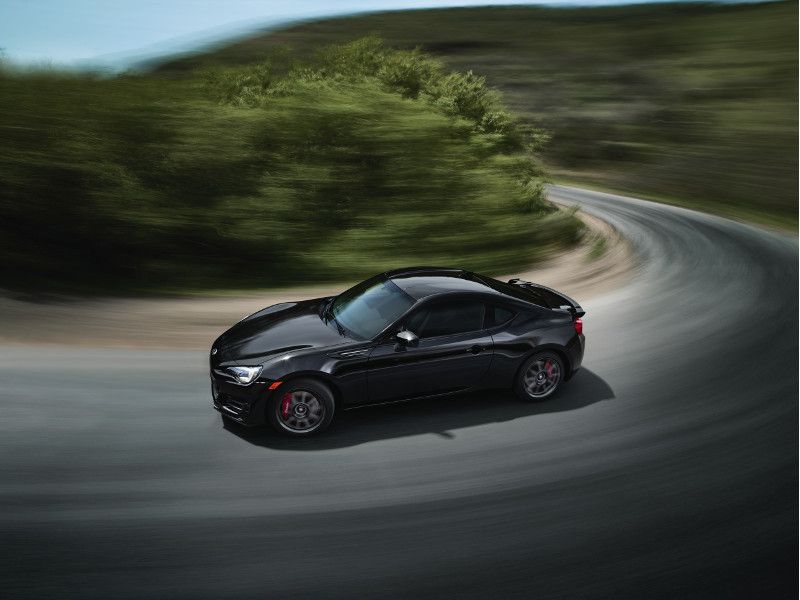
Photo by Subaru